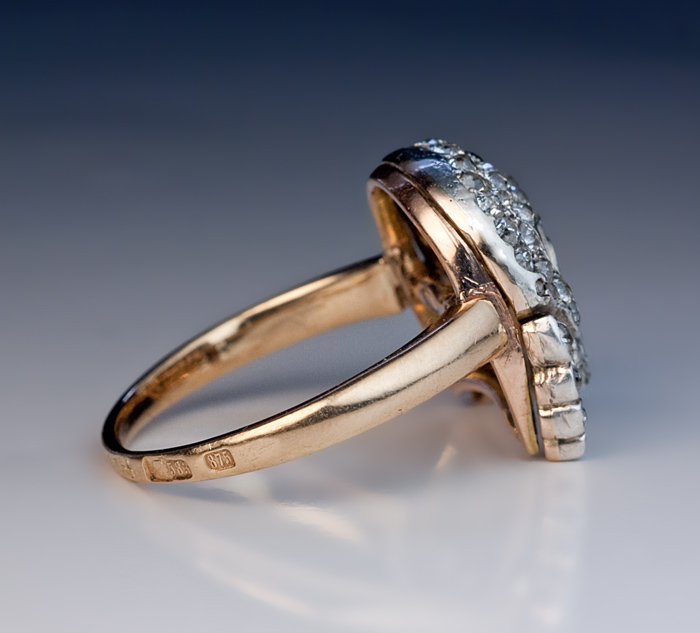Christian Dior: Understanding the World of the Famed Fifties Fashion Designer

Christian Dior lived from January 21st 1905 to October 1957. Dior was a French designer. He founded one of the top fashion houses in the world. The fashion house is now under the ownership of Groupe Arnault.
Christian was born in a water town, within the coastal region of Normandy, France. The town is referred to as Granville. He was born second of five children. He was the child of Maurice Dior. The elder Dior was a prosperous producer of fertilizer. The firm of the family was Dior Frères. His mother was formerly known as Isabelle Cardamone. Dior had four siblings: Raymond, Bernard, Jacqueline and Catherine. The familial unit made the move to Paris when Christian was five years old. The entire family returned time and again to the Normandy coastal region while on Holiday in the summertime.
The family wanted the eventual designer to become a diplomat. Dior, though, was quite expressive and had an artistic bent. He was moved by emotion when he worked in the field of art. Dior earned money from the sale of his fashion blueprints. He was paid ten cents (U.S.) for each drawing. Dior left school, eventually. In 1928, he attained money from his father. With the money, he financed a modest gallery of art. He and an acquaintance sold art to patrons, by famous artists such as Pablo Picasso. Dior’s mother and brother passed away-three years later. Financial hardship became a reality. A financial disaster to the family fertilizer business happened during the Great Depression. The gallery closed its doors as well.
Dior became the employee of the well-known designer of fashion: Robert Piguet. The preceding event occurred in 1937. The famous designer allowed Dior to create fashions for three of his collections. It was through the instruction of Piguet that Dior learned the valuable lesson of fashion simplicity. A day dress which was referred to as “Café Anglais” was welcomed by the general public. Dior worked, in conjunction with Pierre Balmain and was succeeded by Marc Bohan. Marc Bohan became the head of design at Christian Dior Paris, during the 60s. Dior parted ways with Piguet when he was called into military service.
Dior left the Army in 1942. When he did, he joined the fashion house of Lucien Lelong. Balmain and Dior were the key designers at the fashion house. Dior remained an employee at the house for the remainder of World War II. He worked tirelessly in his labors to preserve the fashion industry during the war. His dedication was based on artistic and economic beliefs. Christian Dior fashionably clothed the spouses of the Nazi officers. Other fashion houses did the same-fashion venues such as Jeanne Lanvin, Nina Ricci, and Jean Patou. Dior’s sister, Catherine (1917 – 2008) was a member of the French resistance. She was captured by the Gestapo, at the time, and sent to a concentration camp. She remained incarcerated at the concentration camp until she was liberated in May of 1945.
The most prosperous man in France, in 1946, was Marcel Boussac. Boussac invited Dior to become a designer for Philippe et Gaston-a fashion house in Paris-established in 1925. Dior, however, wanted to make a name for himself and establish his own business. He was backed by Boussac in founding his fashion house. Dior’s first line was named Corolle. Corolle was presented to the public on February 12th of 1947. The name in English means circlet of flower petals. The phrase of New Look was the name given to the line by Carmel Snow, Editor-in-Chief of Harper’s Bazaar.
The Dior designs had much more in the way of depth and volume than the boxier shapes of the World War II era. The World War II fashion was in line with conservation of material. Dior was a masterful genius in way of establishing beautiful silhouettes. He combined fabrics lined with percale and provided much in the way of bodices supporting a fuller-style. His design involved a style where models tended to appear more curvaceous. His dresses flared out from the waist area. The area of the waist was uniquely small.
Some women did not like the additional fabric, at first, due to the conservation of fabric found in the designs of the forties. The opposition eventually became a thing of the past when the shortages of World War II ended. The “New Look” provided women with a revolutionary form of dress. His design reestablished Paris as a center of fashion.
Dior passed away while on Holiday in Montecatini, Italy. The date was October 24th of 1957. Prior to his passing, Dior was nominated, in 1955, for Best Costume Design. His design was created for Terminal Station. The director was Vittorio De Sica. The film was produced in 1953. After his death, in 1967, the fashion designer was nominated for a BAFTA, for Best British Costume Color for Arabesque-directed by Stanley Donen (1966).
In conclusion, the Dior legend lives on: Many artists, since the 50s have mentioned the name Dior in their songs and in their stories.







